
"Eksperimentalna komorna opera" is the new black.
mailecolbert.com/
soundcloud.com/maile-colbert
There is something tender and naive to our perception of our effect upon the world around us. Of course, we do affect very much our immediate surroundings in time and space. But we can only speculate in our short time in existence how these effects play out, and what their roll in the grand tapestry of this world they play. We have a childlike perception to our relationship to the world and nature, as if we were still somehow the center of all that is good and destructive. We equate the end of the world to the end of our species; even within our own species we equate an extreme shift or change as End Tymes, rather then an evolutionary leap. We give our End Tyme such extremes…there is no middle ground. There is clarity of good and bad, those punished and those promoted, those not ready and those who saw the light. It reads like a fairy tale, “Come Kingdom Come” is an experimental opera concerning millennialism and apocalyptic thought and theory; an exploratory comparison of this past turn of the millennium to it’s prior. A geography in time and space is formed using various field recordings of the before, during, and after math of natural disasters and other phenomena; the seismic activity of an earthquake, the thunderous tsunami, VLF recordings of a sun storm hitting our magnetosphere, the quiet of Chernobyl, and endangered species of bird calling in the desert. The work is then shaped and molded to achieve a haunting tapestry of rapturous desire, a desperate and beautiful search of meaning, and a whirlwind ecstatic joy and fear.
The audio-visual performance begins in darkness with the sound of VLF recordings of the magnetosphere surrounding the seated audience. Slowly emerging one by one, then disappearing just as fast come textured images we cannot quite make out, almost like the impression of a bright light upon our closed eyelids. These images begin to slow their reveal and we see the beautiful photographic work of sound and visual artist Olivia Block. The technique of exposing the development process without a direct subject…strangely powerful in their minimalism, they slowly weave in and out of each other on three walls forming a triptych as the sound begins to build into the first act, performed live electronically in surround-sound by the artist. The performance bookends with bringing in a live-feed of the electromagnetic current of the space, mixing in duet with the VLF recordings from the beginning, bringing us to a full but changed circle.
Come Kingdom Come is an experimental opera concerning millennialism and apocalyptic thought and theory; an exploratory comparison of this past turn of the millennium to it’s prior. The opera uses The Book of Revelations as a score and launching point, mixing the poetry of Ian Colbert with medieval chant, sung with the sublime voice of classically trained soprano, Gabriela Crowe under the direction of Maile Colbert. The work was then shaped and molded by Maile towards a tapestry of rapturous desire, a desperate and beautiful search of meaning, and a whirlwind ecstatic joy and fear.
Come Kingdom Come is available in a custom 6-panel sleeve, and a glass-mastered CD.
For cd and digital purchase:http://www.thesingularwe.org/fs
For a little taste: Sound Cloud
- mailecolbert.com/
Maile Colbert's so-called “experimental
opera”—“experimental chamber opera” might be more accurate—is a tad
mystifying but no less pleasurable for being so. On content grounds, The New Testament's
“Book of Revelation” acts as as a springboard for a work conceptually
rooted in ideas about apocalypse and the recent millennium turn;
musically, the score blends Ian Colbert's poetry with medieval chant and
features the singing of the classically trained soprano Gabriela Crowe
as well as guest contributions of unspecified design from Tellemake
(tracks one, three, five, and six) and Jessica Constable and Rui Costa
(track eight).
That Colbert, a media artist, writer, and
educator who once lived in Los Angeles but now calls Lisbon, Portugal
home, has created something unconventional—at least as far as
traditional opera conventions are concerned—is readily apparent from the
outset, with “Ouverture For That Day” eschewing the customary
orchestral sounds for electronic textures one more associates with
ambient-electronic soundscaping. Choral voices emerge quietly, their
presence muted somewhat by a dense swirl of electroacoustic sounds and
nature field recordings. The seven parts that follow likewise challenge
expectations by in some ways falling in line with opera conventions—in
Crowe's refined delivery, for example—but in other ways deviating boldly
from them, particularly in the experimental sound design. Perhaps the
boldest display of contrast occurs when “Act Three, Day From Arrival”
merges programmed beat patterns and electronics with baroque string
elements and church organ.
A hallucinatory quality often permeates the
work, in particular when Crowe's supplications intermix with other
disembodied voices, choral and otherwise, within the haunted dronescapes
“Act One, Begins,” “Act Four, Four Falling Branches,” and “Act Five, A
Fluid Dawn.” As dreamlike is “Act Two, Two Vessels,” where murkiness is
embraced to a marked degree. As compelling as Colbert's work is, it's
Crowe's contribution to the recording that merits special mention.
Without her presence, the work's oft-ponderous instrumental presentation
would come across as emotionally cool and less involving; to cite one
example, Crowe's anguished expression raises the emotional temperature
of “Act One, Begins,” and her singing makes a critical difference
elsewhere, too. Come Kingdom Come is an enigmatic work but a
captivating tapestry nonetheless, and one Will Long should be proud to
have appear on his Two Acorns label. - textura
ARTWORK | SINGLE-CHANNEL VIDEO |
Selected works |
Where Under (2010)“What was the first sound heard? It was the caress of the waters” -R. Murray Schaffer “The wise man delights in water.” -Lao-tzu Sadly inspired by the Deepwater Horizon oil spill, “Where Under” asks us to take a different perspective of the importance of our clean water; as life forms born of water, evolved from water, and constructed primarily of water. Shot and recorded in Northern Portugal within the Rio Paiva, the cleanest river in Europe; the film is composed of an underwater ballet and sound composition provoking us to consider the importance of this underwater world. Sound co-composition: Rui Costa Underwater sound and video recordings: Andrea Parkins, Rui Costa, Maile Colbert Production residency: Binaural/Nodar |
Ice Thaw Chorus (2008)Commissioned for Klaus Nomi tribute show at Galleria Aus18 in Milano, Italy, 2008 Interview with Maile Colbert |
Over the Eyes (2009)Over the Eyes from Maile Colbert on Vimeo. Created at Binaural art residency fall 2007, Nodar, Portugal Interview with the artist Maile Colbert |
I'm Awake Now, Let's Get Lost (2007)Music video created for the collaborative effort of the French band Nape and composer Tellemake, 2007 |
Nows Important (2006)Single channel video premiered at the Turn the Screws Festival in Los Angeles, 2006 |
Out (2003)Out (2003) is an optically printed experimental film portraying Lady Macbeth’s nervous breakdown in Shakespeare’s Macbeth. As the actor paces nervously back and forth across the set, ringing his hands anxiously, his body splits, top leaving bottom. The image doubles, the speed quickens. Optical effects manipulate the image with the rhythm of anxiety. The structure climaxes, falling into an eerie calm. Using a technique called “weaving”, the image moves in and out of the darkness, until he is completely enveloped. The soundtrack is composed by the acclaimed Avante Garde jazz bassist, Mark Dresser, and electronic musician Davis Kendall. |
Butterflyweed (2002)Single channel video work made in 2002, premiered at the Portland International Experimental and Documentary Film Festival. "I want to describe a feeling felt at the age of seven re-occurring, i have not found the words to yet describe. |
Night Light Shake (2002)Single channel video inspired by a poem by her brother, Ian Colbert, Night Light Shake premiered at the Museum of Modern Art in New York City. |
gama ray (2001)Early work from 2001, premiered at the New York Video Festival. Phantom limbs closely monitored. |
artwork | performance, live video and sound |
Selected works |
Passageira AustralisiAir artist-in-residency at the Royal Melbourne Institute of Technology with the interdisciplinary performance "Passageira australis", Melbourne, Australia |
Come Kingdom ComeperformancesMay 2013Sintoma Festival, Porto, Portugal Activate the Medium, The Lab, San Francisco, 2012 |
passageira em casa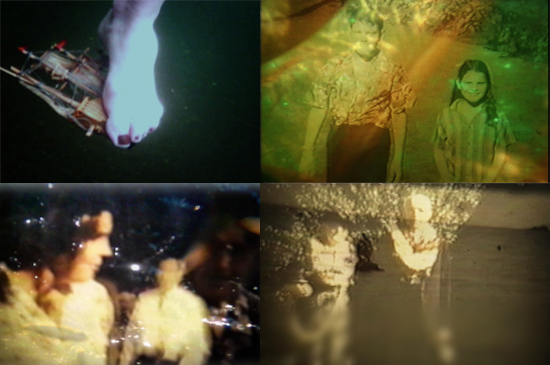 Project page |
Open Decallation (2012)Video: Maile Colbert Sound: Maile Colbert and Simon Whetham Production: Granular and Opensound A decal is a shadow of its former context, an object on its own, a trace of its former self. "Open Decallation" as well refers to recall and recollection. Its main sources are various text chats and messages composed between members of the Opensound group during the production process. Run like a salon to promote discussion in the midst of experiencing the audio/visual aspects of the work, "Open Decallation" acts as a living catalog of an event and its production. A special thank you for Granular and the fine folk at Opensound. |
Wadada Leo Smith's Organic, Sons d'Hiver (2012)Live capture of video projection created for Wadada Leo Smith's Organic at the Sons d'Hiver Festival in Paris, February 2012. Wadada Leo Smith - composition, trumpet Angelica Sanchez - piano Brandon Ross - electric guitar Lamar Smith - electric guitar Michael Gregory - electric guitar Okkyung Lee - cello John Lindberg - double bass Skuli Sverrisson - electric bass Pheeroan Aklaff - drums Jesse Gilbert - live visuals Maile Colbert - live camera Roulette, NYC 2011 Jazz em Agosto, Lisbon, Portugal, 2011 |
Decalled Upon Performance reelDocumentation of the Decalled Upon intermedia performance Part of Decalcomania, The Exchange Gallery, Penzance, Cornwall, United Kingdom |
where under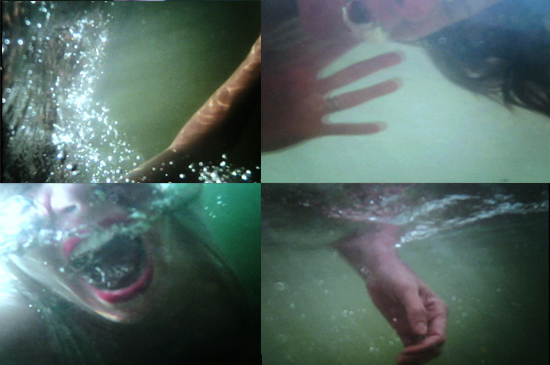 “What was the first sound heard? It was the caress of the waters” -R. Murray Schaffer “The wise man delights in water.” -Lao-tzu Sadly inspired by the Deepwater Horizon oil spill, “Where Under” asks us to take a different perspective of the importance of our clean water; as life forms born of water, evolved from water, and constructed primarily of water. Shot and recorded in Northern Portugal within the Rio Paiva, the cleanest river in Europe; the film is composed of an underwater ballet and sound composition provoking us to consider the importance of this underwater world. sound co-composition: Rui Costa underwater sound and video recordings: Andrea Parkins, Rui Costa, Maile Colbert production residency: Binaural/Nodar |
Transit Project ReelA project in collaboration with Maile Colbert and Paul Bradley Premiered in 2008 at the Centro del Carmen (Valencia, Spain) for OBSERVATORI 08 – International Festival of Artistic Investigation FOUR CHANNEL VIDEO PROJECTION EIGHT CHANNEL SURROUND SOUND 20 MINUTES LIVE PERFORMANCE AND 45 MINUTES VIDEO PROJECTION |
artwork | installation |
Selected works |
Xestobium rufovillosum (2013)For the group show "Diorama of an Art Exhibition no.4" Media: box, photo puzzle, field recording, headphones. audio device. About: "To attract mates, these wood-borers create a tapping or ticking sound that can be heard in the rafters of old buildings on quiet summer nights. They are therefore associated with quiet, sleepless nights and are named for the vigil (watch) kept beside the dying or dead, and by extension the superstitious have seen the death watch as an omen of impending death." "...within ye hear No sound so loud as when on curtain'd bier The death-watch tick is stifled." - John Keats |
DecallING CCCDocumentation of the Decalled CCC video and sound installation Video: Maile Colbert Sound: Maile Colbert and Simon Whetham Curation: Paulo Mendes Funding:Europeal Capital of Culture |
Decalled Upon Installation DocumentationDocumentation of the Decalled Upon video and sound installation Part of Decalcomania, The Exchange Gallery, Penzance, Cornwall, United Kingdom |
Transit Project ReelA project in collaboration with Maile Colbert and Paul Bradley Premiered in 2008 at the Centro del Carmen (Valencia, Spain) for OBSERVATORI 08 – International Festival of Artistic Investigation FOUR CHANNEL VIDEO PROJECTION EIGHT CHANNEL SURROUND SOUND 20 MINUTES LIVE PERFORMANCE AND 45 MINUTES VIDEO PROJECTION |
Over the Eyes Installation DocumentationCreated at Binaural art residency fall 2007, Nodar, Portugal Interview with the artist Maile Colbert |
StationSTATION is a multi-sensory media environment constructed in collaboration with artists Jeff Cain, Maile Colbert, Nate Harrison, and Albert Ortega. STATION consists of 2 radio stations with receiving towers and computer controllers, 4 scrim projection screens and a loudspeaker array. Using Very Low Frequency radio receivers, audio data from the earth's magnetosphere (data responsible for the natural phenomenon known as the Northern Lights) is captured and fed through custom software developed to manipulate video content in realtime. The resulting audio is both sent out over the speakers and used to trigger the video engines, creating a space in a constant state of transformation due to the earth's naturally changing electrical conditions. |
| ||||||||||||||||||||||||||||||||||||||||||||||||||
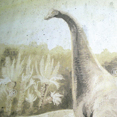

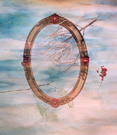
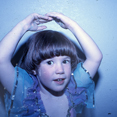
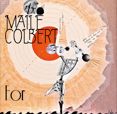
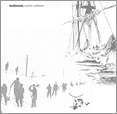
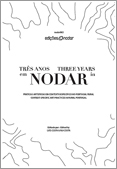
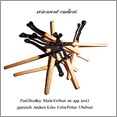
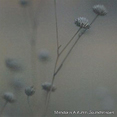
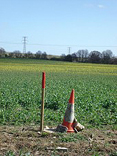
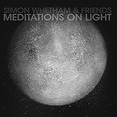
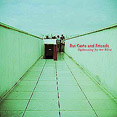

Nema komentara:
Objavi komentar